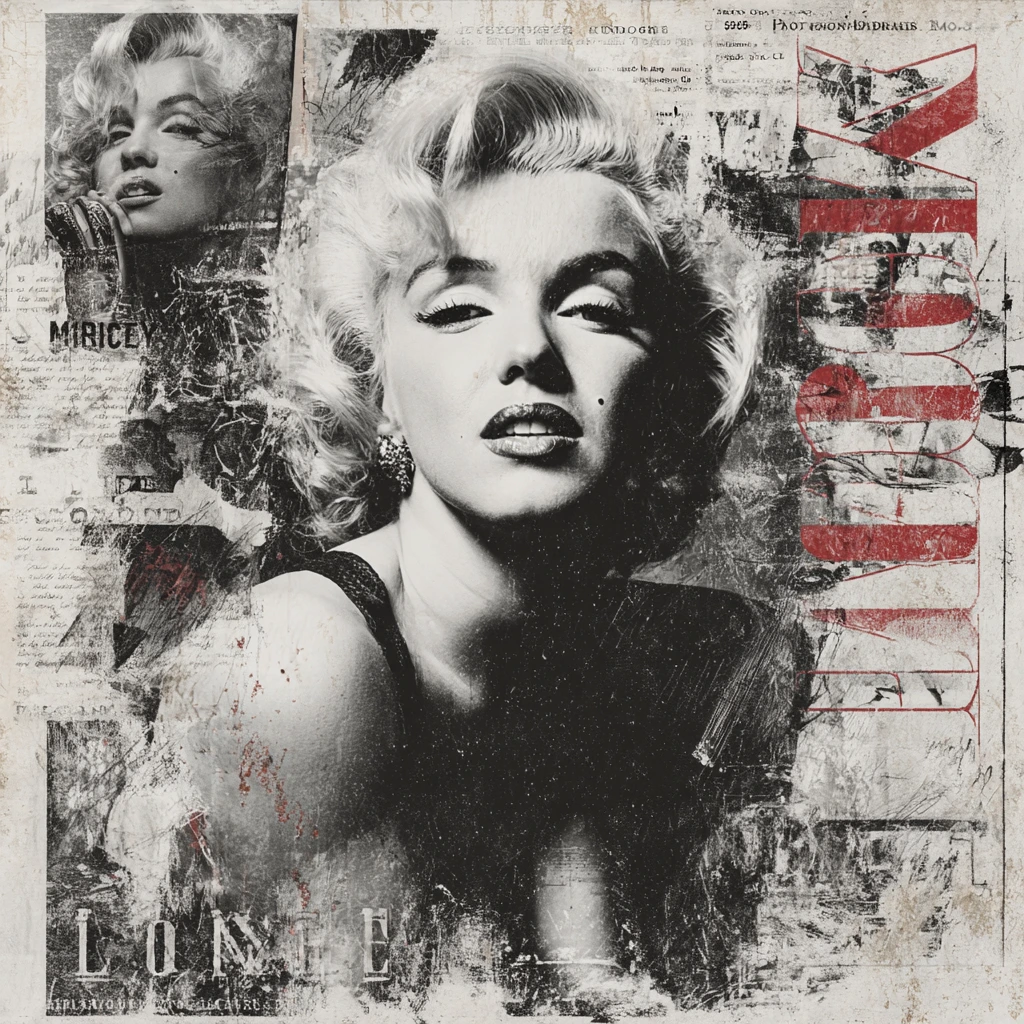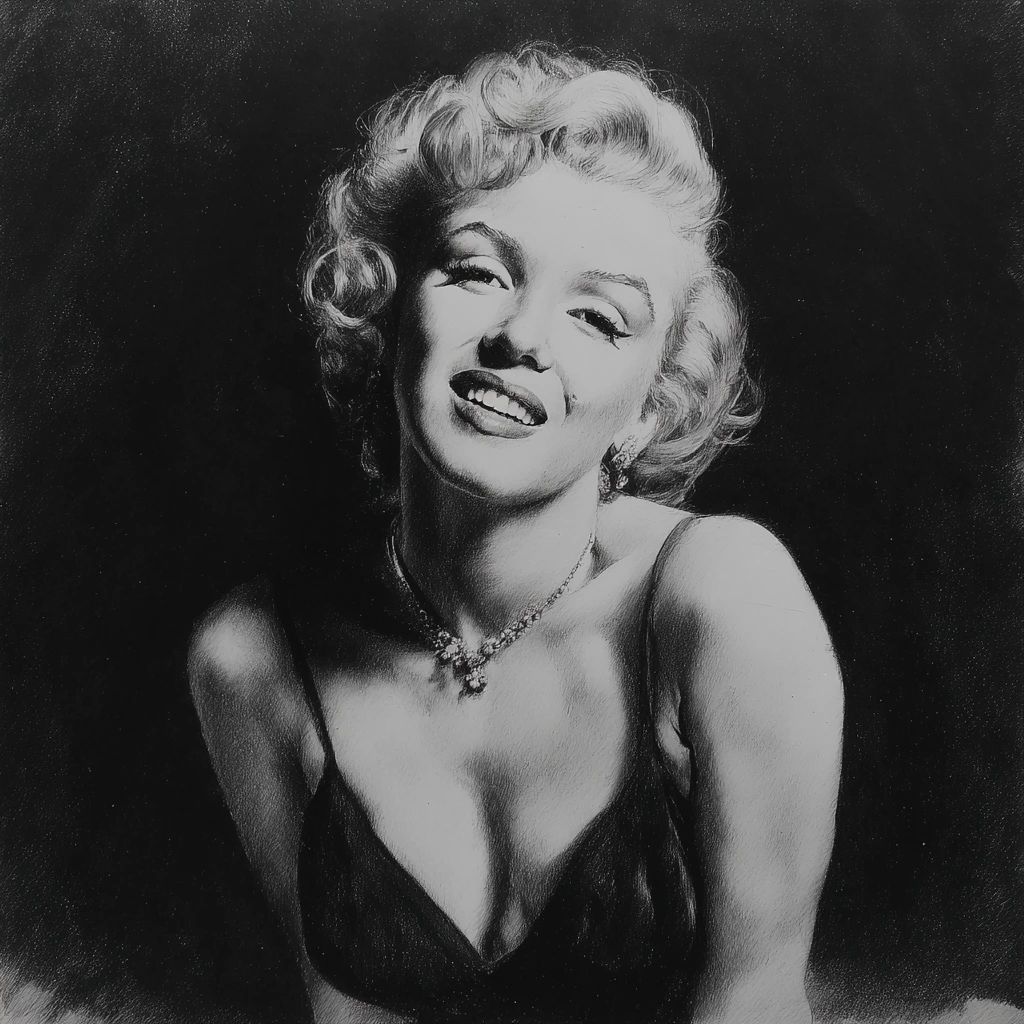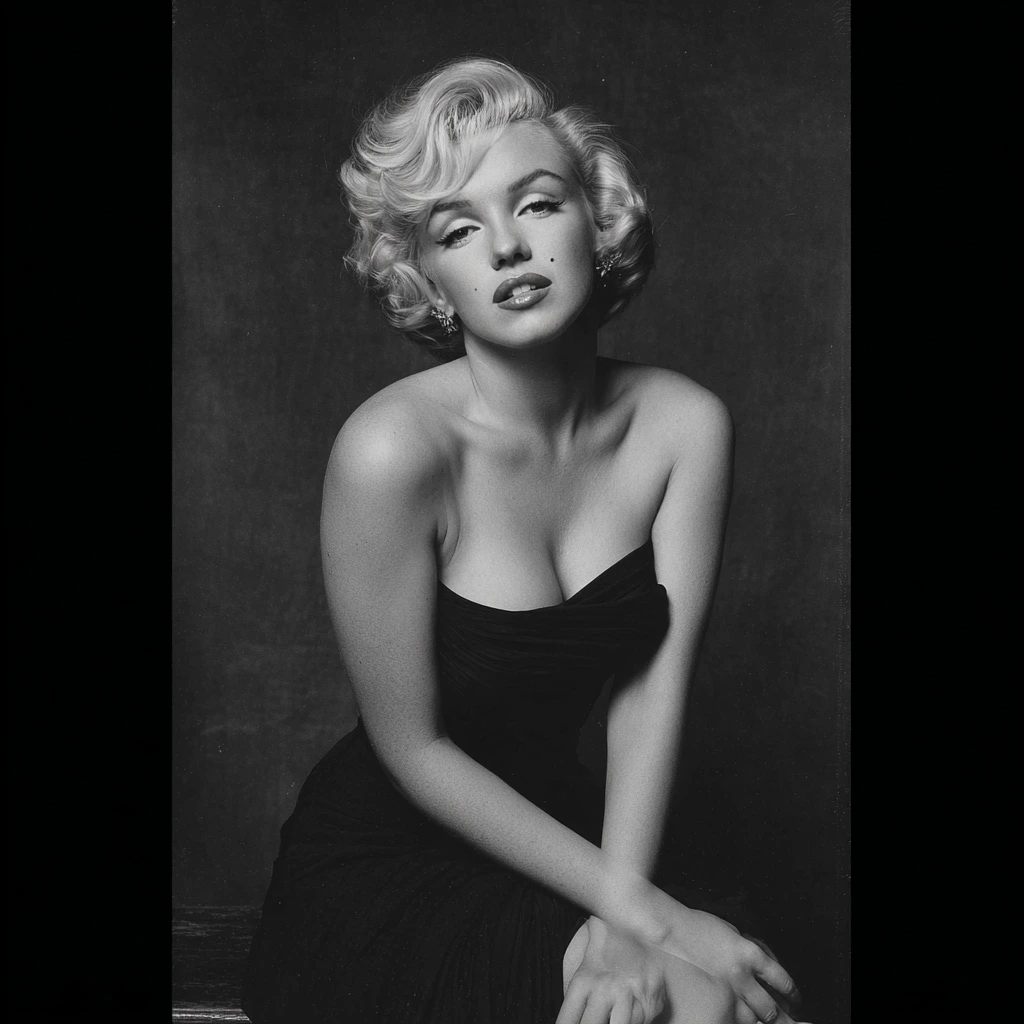Marilyn Monroe, born Norma Jeane Mortenson on June 1, 1926, in Los Angeles, California, remains one of the most iconic figures in American popular culture. Known for her stunning beauty, her comedic talent, and her ability to play both the vulnerable and the seductive woman, Monroe’s life was a complex combination of immense success, personal struggles, and public fascination.
Her tragic death at the young age of 36 only deepened the mystery surrounding her. Yet, despite the tumultuous nature of her life, Marilyn Monroe’s legacy has endured, continuing to captivate and inspire generations long after her passing.

The Early Years: A Struggle for Stability
Marilyn Monroe’s childhood was far from the glamorous life she would later lead. She was born into a world of instability. Her mother, Gladys Pearl Baker, was a film cutter in Hollywood, but she struggled with severe mental health issues and had an unstable life. Gladys’ illness led to her being institutionalized multiple times, leaving Monroe to spend much of her childhood in foster care, group homes, and orphanages.
Monroe was baptized as Norma Jeane Mortenson and grew up without the love and care of a steady parental figure. She was often moved from one foster home to another, and in 1935, at just nine years old, she was placed in the Los Angeles Orphans Home after her mother’s mental health deteriorated further. It was in these early years that Marilyn developed a sense of insecurity and loneliness, which would shape much of her later struggles.
At the age of 16, Norma Jeane married James Dougherty, a neighbor, to escape the unstable foster system. The marriage was more a practical decision than a romantic one, and it ended after four years in 1946 when Norma Jeane decided to pursue a career in modeling and acting. The name “Marilyn Monroe” came to life during this period, created by a combination of her mother’s maiden name, Monroe, and the actress Marilyn Miller.
The Transformation into Marilyn Monroe
Monroe’s transition from a shy, struggling young woman into one of Hollywood’s most recognizable stars was a carefully orchestrated transformation. In 1946, she signed a contract with 20th Century Fox, and it was here that the first steps toward her new identity began to take shape. Fox encouraged her to alter her appearance, dyeing her natural brunette hair to the iconic platinum blonde she is remembered for today. Monroe also took voice lessons and improved her acting skills, shedding her previous persona to become a unique symbol of glamour and sexuality.
Her breakthrough came in 1950 when she was cast in the film “The Asphalt Jungle”, a heist film where she played a small but memorable role. Monroe’s combination of beauty and vulnerability captured the attention of audiences and filmmakers alike. That year, she also starred in the drama “All About Eve” (1950), and although her part was minor, it solidified her place in Hollywood.
The following years saw Monroe’s star rise significantly. By 1953, she was a household name. Films like “Niagara”, “Gentlemen Prefer Blondes”, and “How to Marry a Millionaire” turned her into the quintessential sex symbol of the 1950s. Monroe’s sultry, breathy voice, coupled with her beauty and comedic timing, made her an enduring figure in cinema. “Gentlemen Prefer Blondes” (1953) is still one of her most famous films, largely due to her portrayal of the charming but naive Lorelei Lee, a role that cemented her persona as a lovable “dumb blonde.”
Despite her growing fame, Monroe’s public image was often at odds with her inner self. Behind the scenes, she struggled with a deep sense of insecurity and a desire to be taken seriously as an actress. Her performances, while often typecast, were also reflections of her personal battles: the woman who played the epitome of femininity was often fighting to maintain a sense of identity and dignity.

The Personal Struggles: Marriages, Mental Health, and Dependency
Though her career flourished, Monroe’s personal life was far from stable. She was married three times, and each marriage played a significant role in the turmoil that would ultimately consume her.
Marriage to Joe DiMaggio (1954-1955)
Her first high-profile marriage was to Joe DiMaggio, the legendary New York Yankees baseball player. The two married in January 1954, but their relationship quickly became strained. DiMaggio, a man of few words and many expectations, was reportedly deeply possessive and frustrated by Monroe’s public image. The most famous incident came when Monroe famously sang “Happy Birthday, Mr. President” to John F. Kennedy at a televised event in May 1962. DiMaggio’s reaction to this, and their struggles over Monroe’s public persona, led to their separation and eventual divorce in 1955.
Marriage to Arthur Miller (1956-1961)
Monroe’s second marriage to playwright Arthur Miller in 1956 was more intellectual in nature, but it was also fraught with difficulties. Miller, who was considered one of America’s greatest playwrights, was deeply affected by Monroe’s struggles with mental health. She had frequent emotional breakdowns, and the pressure of being in the spotlight took a toll on her fragile psyche. The couple’s marriage ended in 1961, partly due to Monroe’s worsening mental state, and the inability to reconcile her need for stability with her increasingly erratic behavior.
Mental Health Struggles and Dependency
Monroe’s struggles with mental health and substance abuse became more apparent as her career progressed. She developed a dependency on prescription pills, including barbiturates, to cope with anxiety and depression. Her frequent breakdowns on set and her inability to complete many of her film projects added to her reputation as a “difficult” actress.
Her condition worsened in the last few years of her life. She was often hospitalized for depression, and she began seeing numerous therapists in an attempt to address her emotional instability. At the same time, her film career became increasingly erratic. Despite her challenges, Monroe continued to land significant roles, like in “The Misfits” (1961), which was a major commercial failure but critically praised for her performance.

The Final Chapter: A Life Cut Short
The end came quickly and tragically. On August 5, 1962, Marilyn Monroe was found dead in her Los Angeles home at the age of 36 from an apparent overdose of barbiturates. Her sudden and unexpected death sent shockwaves through the world. Officially ruled as a probable suicide, Monroe’s death was the subject of many rumors and conspiracy theories. The theory that Monroe’s passing was connected to her alleged relationships with President John F. Kennedy and his brother Robert Kennedy only fueled speculation.
Monroe’s death, coming just weeks after her famous rendition of “Happy Birthday” at Kennedy’s birthday gala, added an air of mystery to her passing. Many believe that the intense pressures of fame, combined with her ongoing mental health issues and struggles with substance abuse, led to her untimely demise.
Legacy: The Eternal Icon
Marilyn Monroe’s legacy is immeasurable. She remains one of the most recognizable women in film history, a symbol of beauty, glamour, and tragedy. Her films, particularly “Some Like It Hot” (1959), “Gentlemen Prefer Blondes”, and “The Seven Year Itch” (1955), continue to be celebrated as some of the most beloved movies of the 20th century.
Monroe’s image has been immortalized in art, from Andy Warhol’s iconic pop art portraits to countless fashion and beauty campaigns that continue to draw inspiration from her style. Her story of transformation from a troubled orphan to a global icon is both inspiring and heartbreaking.
What makes Marilyn Monroe’s legacy so enduring is the tension between her public persona as a radiant, joyful sex symbol and the personal tragedies that defined her real life. Today, she represents not just the golden age of Hollywood but the complex nature of fame itself—its intoxicating power, its capacity to uplift, and, ultimately, its destructive potential.
Monroe once said, “I am trying to find myself. Sometimes that’s not easy.” Her struggle to find herself, amid the pressure to meet the expectations of others, became her tragic reality. Yet, despite all her battles, Marilyn Monroe’s spirit continues to captivate the world, and her legacy is cemented as one of the most influential figures in pop culture history.
Table of Contents
the charming Ana de Armas: A Rising Star’s Journey to Stardom – trendsfocus
Marilyn Monroe | Movies, Death, Real Name, & Facts | Britannica